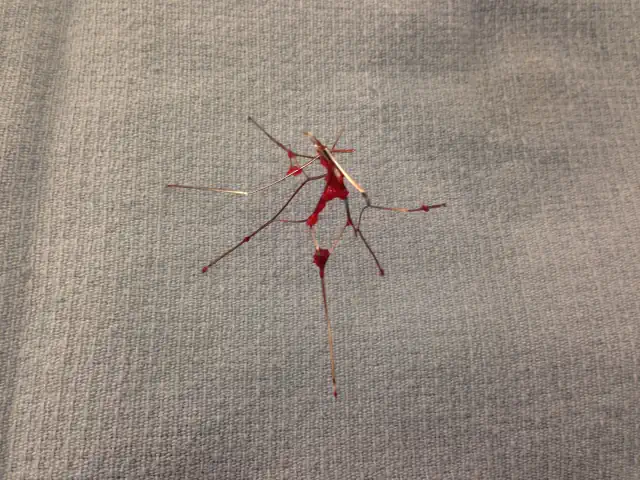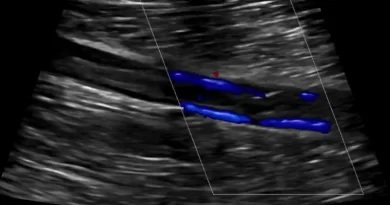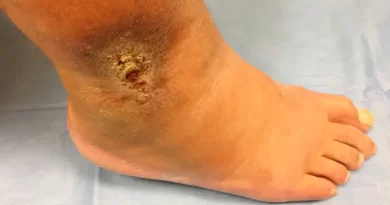IVC Filter
An IVC filter is a small mesh to stop clots from traveling from the leg veins to the lungs. In my opinion, the logic behind IVC filters is solid. If someone has a blood clot in the legs, it makes sense to block it from moving. But the problem is that in reality this is not the case. Practically, it is hard to prove that IVC filters do any good.
When to Place an IVC Filter
The best treatment for deep vein thrombosis is with a blood thinner. And once a patient is taking a blood thinner, there is usually no need for more treatment. But sometimes people have a blood clot in the leg veins, but they cannot receive a blood thinner. For instance, they might need urgent surgery. Or they are bleeding. In these cases, we worry that the clot might grow. Or even worse, that it might move from the leg veins to the lungs to cause a pulmonary embolism.
This is where it starts making sense to physically block the clots from moving up into the lungs. In fact, many experts agree that it is reasonable to place an IVC filter if a person suffered a deep vein thrombosis or pulmonary embolism and cannot receive a blood thinner.
Still, the decision to offer an IVC filter is not straightforward even in these situations. Here are a few considerations we typically think about:
- Clot location. For example, the risk from a calf deep vein thrombosis is usually lower and so we usually do not suggest an IVC filter. We also do not offer IVC filters for upper extremity clots.
- Will we be able to start the blood thinner soon? Sometimes there is more risk from an IVC filter than there is from waiting a day or two.
- Can we give a lower dose of a blood thinner?
How is an IVC Filter Placed?
Usually, doctors place these devices in a cath lab or in the operating room. But sometimes they can even get them in place at the bedside. The procedure itself is not complicated. It is very similar to placing an IV line. But an IVC filter will sit in a major vein and because it needs to be in a specific location. So, the procedure happens under sterile conditions and with special cameras.

IVC Filter Complications
Unfortunately, IVC filters cause all sorts of unwanted complications. These complications tend to happen while the filter is in place. Here are a few examples of complications:
- Deep vein thrombosis or even IVC thrombosis. In some people the filter itself can promote clots. Sometimes the clots are in the leg veins. But sometimes the whole inferior vena cava can clot. Because this is the main vein that drains the blood from the legs, this can be a very problematic complication.

- Filter fracture. An IVC filter is a mechanical device. And like any mechanical device, it can break. Fractures from these filters will go with the blood stream and end up elsewhere, including in the heart and lungs.
- Migration. This is different from fractures. Migration means that the whole filter moves.
- Perforation. Sometimes the filter can dig into the inferior vena cava wall. Usually this does not cause harm. But sometimes, they can penetrate adjacent structures like the bowl and cause harm there.
Timely Removal is Key!
The main problem with IVC filters is that patients and doctors forget to get them out. This may sound a bit weird. How can someone forget they have something implanted in their body that needs to come out? But once the filter is in place, you don’t really feel it unless there is a complication. Also, sometimes doctors use IVC filters for patients who have a lot going on. By the time it is time to get the filter out, the patient may not even remember they had it. They may be too busy focusing on other matters.
But we know that for several months, the longer the filter is in place, the higher the risk for complications. And in many cases, patients don’t need them anymore. So it is important to make every effort to get filters out during the window of opportunity.
What about Chronic Filters?
What to do with IVC filters that were left in place for a long time is different. In most cases, an IVC filter that has been sitting in place for years will never cause harm. Still, the decision is complicated. For example, the type of filter matters. Some filters break down more than others. Another consideration are the complications of the retrieval. With time, IVC filters become embedded in the vein wall. When we take them out, we may tear the vein.

Litigation
There has been much litigation around IVC filters. The reasons for the litigation include uncertainty about some indications surrounding filter use, complications and failure to retrieve a filter. Numerous lawsuits have been filed against the manufacturers of IVC filters, alleging that they knew or should have known about the risks associated with their use and failed to adequately warn patients and healthcare providers. Some of these lawsuits have resulted in significant settlements for the plaintiffs, while others are still ongoing.
Bard vs. White
One example of an IVC filter lawsuit is the case of Bard Peripheral Vascular, Inc. v. White. This case involved a woman named Sherr-Una Booker, who received a Bard G2 IVC filter in 2005. The filter subsequently migrated to her heart and caused her to suffer multiple cardiac events.
Booker filed a lawsuit against Bard Peripheral Vascular, the manufacturer of the G2 filter, alleging that the company knew or should have known about the risks associated with the filter but failed to adequately warn patients and healthcare providers.
The case went to trial in 2015 and resulted in a $3 million verdict in favor of Booker. Bard appealed the decision, but the appeal was ultimately unsuccessful. The case is notable because it was one of the first IVC filter lawsuits to go to trial and resulted in a significant award for the plaintiff.



Pingback: Varicose Veins and Thrombosis: Is there a Connection?